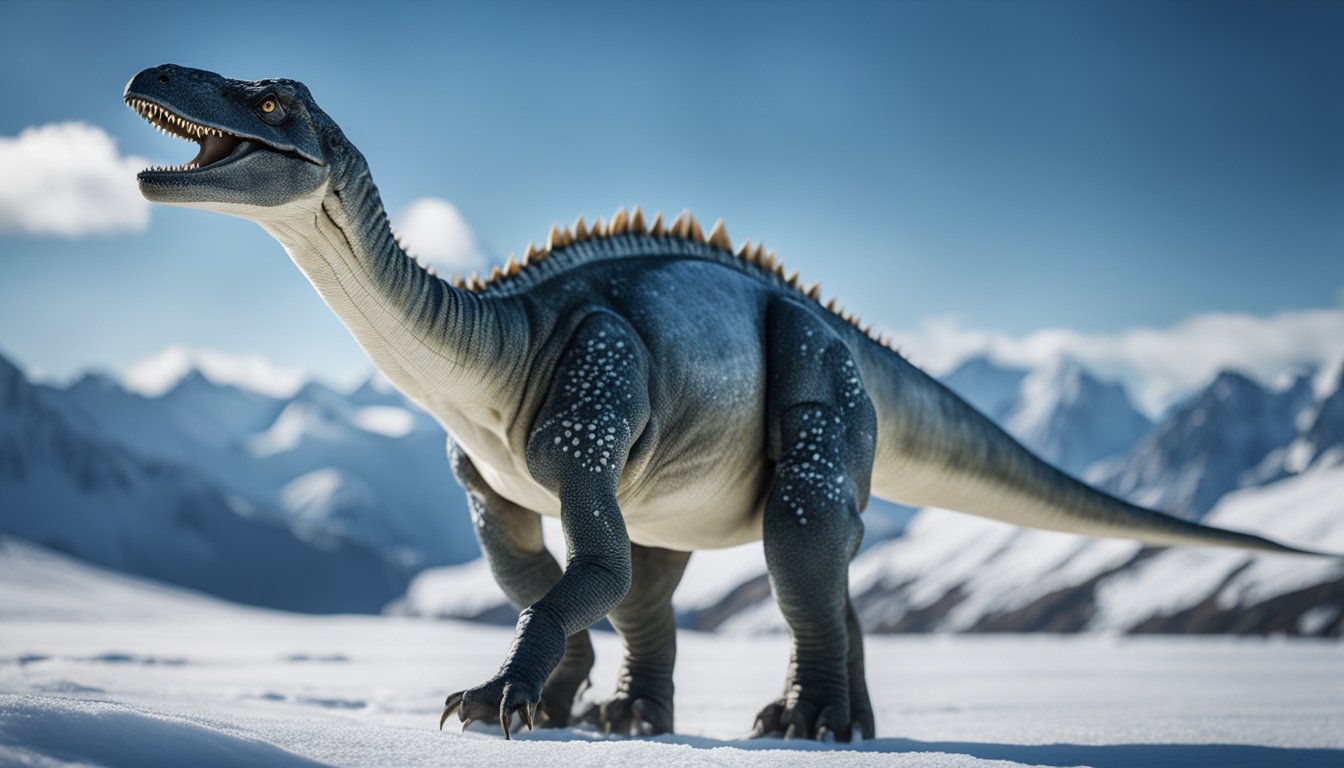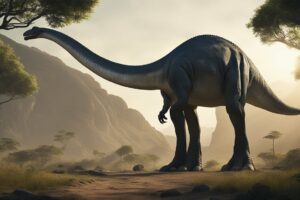Nanuqsaurus is a unique dinosaur species that roamed the Arctic region during the Cretaceous period, around 70 million years ago.
Its name means “polar bear lizard” in the local dialect, which is fitting since it was the apex predator in its environment.
It was first discovered in 2006 by paleontologists Anthony Fiorillo and Ronald Tykoski in the North Slope of Alaska, and was officially named Nanuqsaurus hoglundi in 2014.
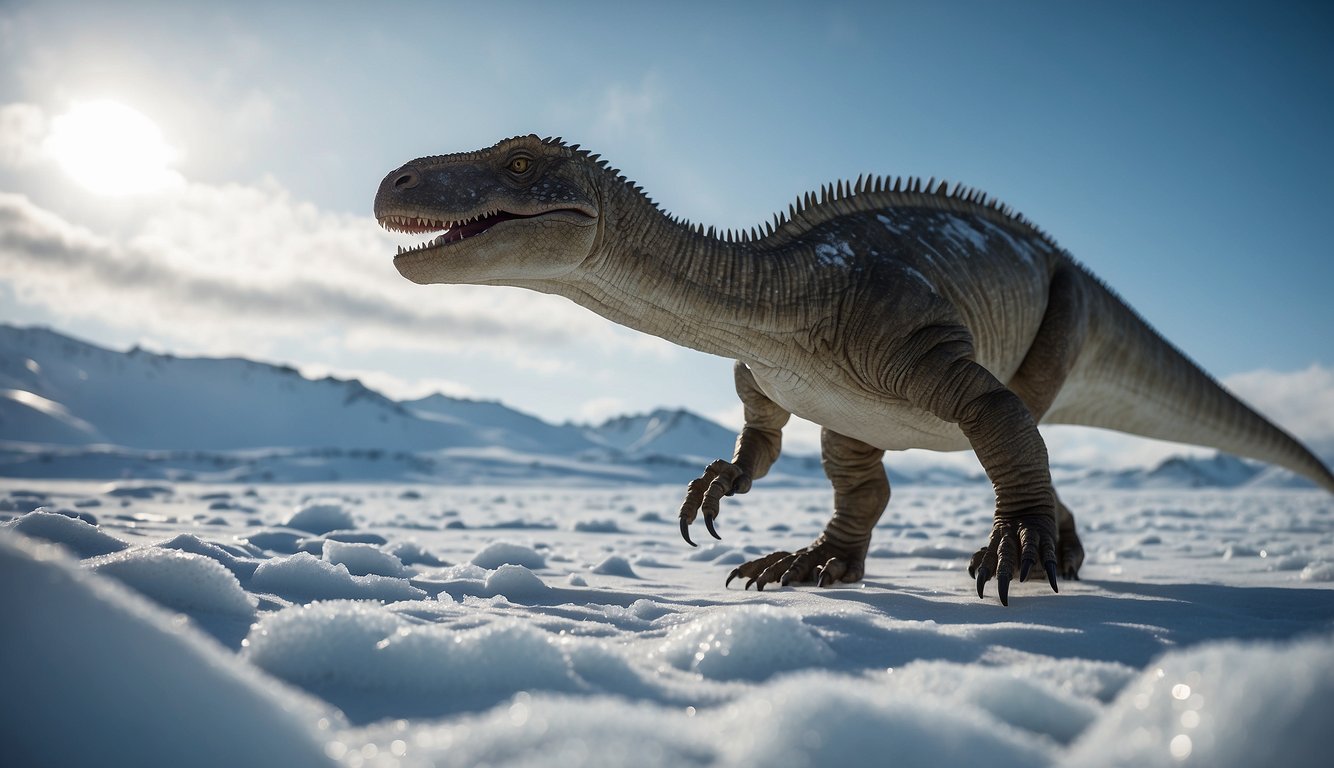
Despite its relatively small size, Nanuqsaurus was a fearsome predator.
It measured only about 20 feet long and weighed around 1,000 pounds, making it much smaller than its more famous cousin, Tyrannosaurus rex.
However, it had some unique adaptations that allowed it to survive in the harsh Arctic climate.
For example, it had shorter legs and a more robust build than other tyrannosaurs, which helped it conserve heat.
It also had a smaller head and teeth, which may have been an adaptation to hunting smaller prey.
Discovering the Nanuqsaurus Hoglundi
The discovery of the Nanuqsaurus Hoglundi, a diminutive tyrannosaur that lived in what is now Alaska during the late Cretaceous period, is a fascinating story of scientific exploration and discovery.
Paleontologists from the Perot Museum of Nature and Science in Dallas, Texas, uncovered the fossils of this intriguing dinosaur, which has captured the imagination of scientists and the public alike.
Fossil Findings in Alaska
The discovery of the Nanuqsaurus Hoglundi began in 2006 when a team of paleontologists led by Anthony Fiorillo and Ronald Tykoski from the Perot Museum of Nature and Science in Dallas, Texas, began excavating fossils in the Prince Creek Formation in North Slope Borough, Alaska.
This area is known for its rich deposits of dinosaur fossils, and the team was hopeful that they would make an exciting discovery.
Their hard work paid off when they uncovered the skull of a new species of tyrannosaur, which they named Nanuqsaurus Hoglundi.
The fossils were found in what is now the Arctic, making it the only tyrannosaur ever found outside temperate regions.
The discovery of this new species was a significant breakthrough for paleontologists, as it provided new insights into the evolution and diversity of tyrannosaurs.
Unveiling at the Perot Museum
After years of careful excavation and study, the Perot Museum of Nature and Science unveiled the Nanuqsaurus Hoglundi to the public in 2014.
The unveiling was a momentous occasion, as it allowed visitors to see the fossils up close and learn more about this fascinating dinosaur.
The Nanuqsaurus Hoglundi is now on display at the Perot Museum of Nature and Science, where visitors can marvel at its diminutive size and learn about its unique features.
The discovery of this new species of tyrannosaur is a testament to the power of scientific exploration and discovery, and it serves as a reminder of the incredible diversity of life that once roamed the Earth.
In conclusion, the discovery of the Nanuqsaurus Hoglundi is a fascinating story of scientific exploration and discovery.
The fossils were found in what is now the Arctic, making it the only tyrannosaur ever found outside temperate regions.
The discovery of this new species was a significant breakthrough for paleontologists, as it provided new insights into the evolution and diversity of tyrannosaurs.
The Nanuqsaurus Hoglundi is now on display at the Perot Museum of Nature and Science, where visitors can marvel at its diminutive size and learn about its unique features.
Life of a Polar Predator
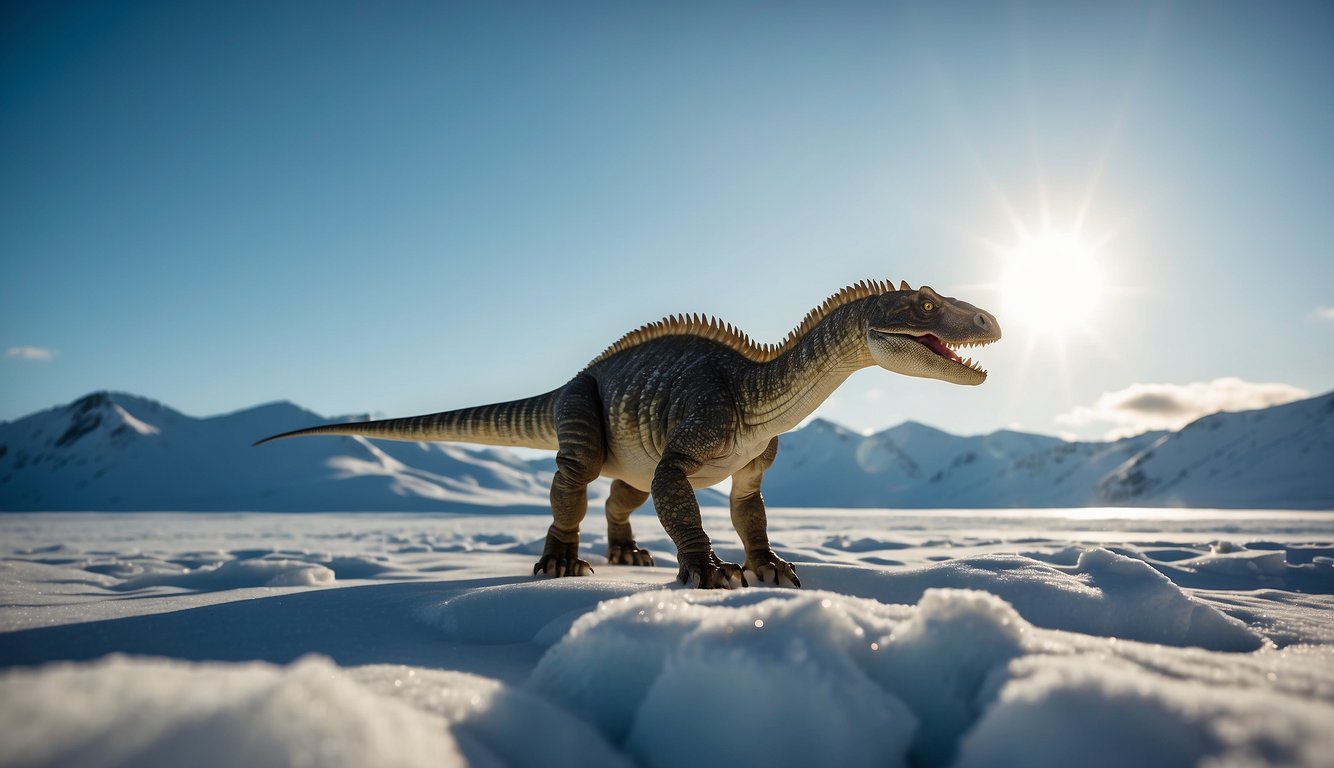
Nanuqsaurus, the “polar bear lizard,” was a carnivorous dinosaur that lived during the Late Cretaceous period, about 70 million years ago.
Despite the harsh Arctic conditions, Nanuqsaurus thrived as a top predator, hunting and feeding on other dinosaurs that roamed the region.
Hunting in the Cretaceous Cold
Nanuqsaurus was a skilled hunter, adapted to the extreme cold of the Arctic.
It had sharp teeth, powerful jaws, and a keen sense of smell, which it used to track and hunt its prey.
Although it was smaller than its cousin, Tyrannosaurus rex, Nanuqsaurus was still a formidable predator, measuring about 20 feet long and weighing around 1,000 pounds.
To survive in the Arctic, Nanuqsaurus relied on its thick, insulating feathers and a layer of fat under its skin to keep warm.
It also had a keen sense of hearing and vision, which helped it detect prey from a distance.
Once it spotted a potential meal, Nanuqsaurus would launch a surprise attack, using its powerful bite to take down its prey.
Diet and Prey
Nanuqsaurus was a carnivore, which means it ate meat.
Its primary prey was likely herbivorous dinosaurs, such as Pachyrhinosaurus, which also lived in the Arctic during the Late Cretaceous period.
Nanuqsaurus would have used its powerful jaws and teeth to tear through the tough hide and flesh of its prey, consuming large amounts of protein and fat to sustain itself in the harsh Arctic environment.
Despite its fearsome reputation, Nanuqsaurus was not the only predator in the Arctic.
It had to compete with other carnivorous dinosaurs, such as Troodon and dromaeosaurs, which also hunted in the region.
However, Nanuqsaurus’ size and strength likely gave it an advantage over its smaller competitors, allowing it to dominate the Arctic food chain.
Fun fact: Nanuqsaurus is the only tyrannosaur ever found outside of temperate regions.
Its discovery has shed new light on the diversity of dinosaur species that lived in the Arctic during the Late Cretaceous period.
The Nanuqsaurus Family Tree
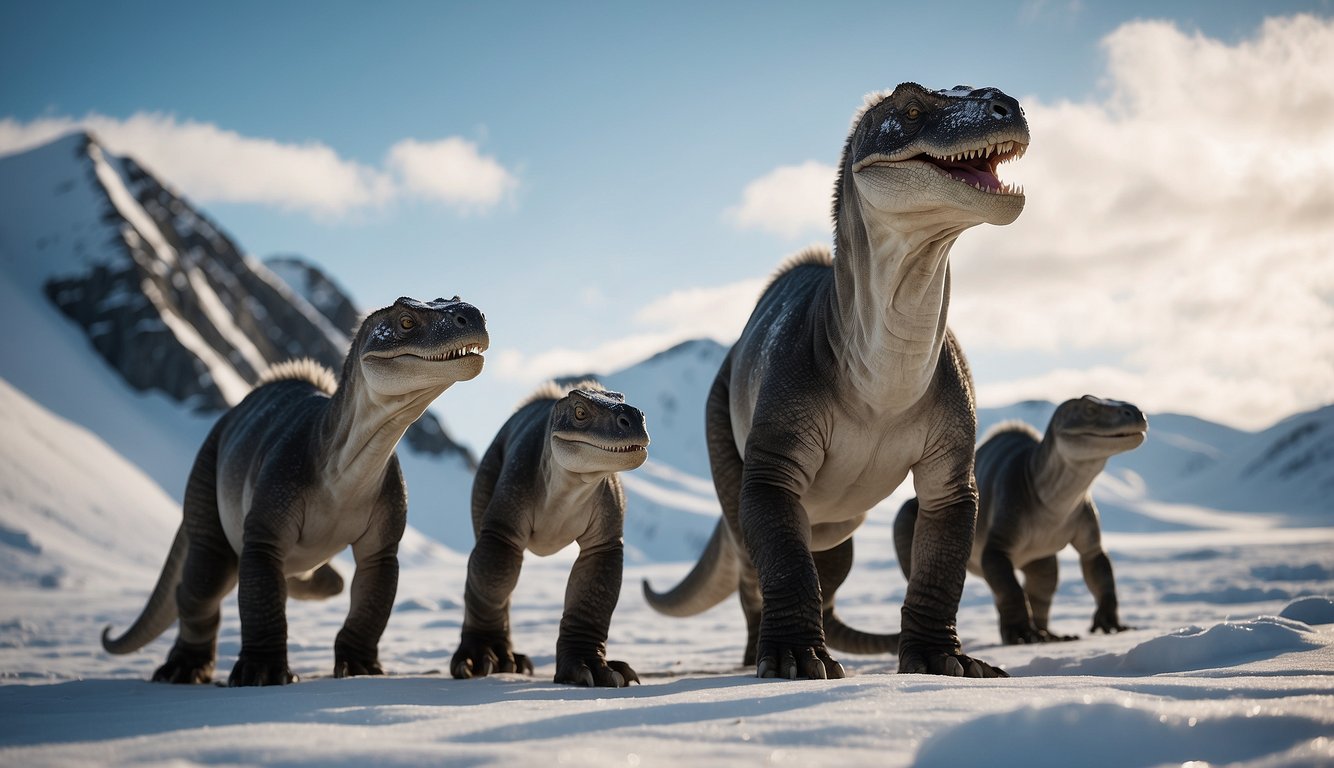
Tyrannosaur Kin and Cousins
Nanuqsaurus hoglundi, also known as the “polar bear lizard,” belongs to the family of tyrannosaurs, which includes the famous T. Rex.
These dinosaurs were the top predators of their time, and their fossils have been found all over the world.
Nanuqsaurus, however, was a pygmy tyrannosaur, measuring only about two-thirds the size of T. Rex.
It is the only tyrannosaur ever found in the Arctic region, and its discovery has provided new insights into the evolution of these apex predators.
Other members of the tyrannosaurid family include Daspletosaurus, Tarbosaurus, and Albertosaurus, among others.
These dinosaurs were all characterized by their large size, powerful jaws, and sharp teeth.
Evolutionary Adaptations
Nanuqsaurus was well-adapted to life in the Arctic, where temperatures were much colder than in other regions where tyrannosaurs lived.
Its small size allowed it to conserve heat, and it likely had feathers or other insulating coverings to keep warm.
In addition to its size, Nanuqsaurus had other adaptations that helped it survive in the harsh Arctic environment.
For example, it had an acute sense of smell, which would have been useful for detecting prey in the snow and ice.
It also had a keen sense of hearing, which would have helped it detect the movements of other animals in its vicinity.
Overall, Nanuqsaurus was a unique and fascinating member of the tyrannosaurid family.
Its discovery has shed new light on the evolution of these apex predators and their adaptations to different environments.
Did you know that Nanuqsaurus is named after the Inupiaq word for polar bear?
Its name is a reference to its habitat in the Arctic and its position as the apex predator in its ecosystem.
The Arctic World of Nanuqsaurus
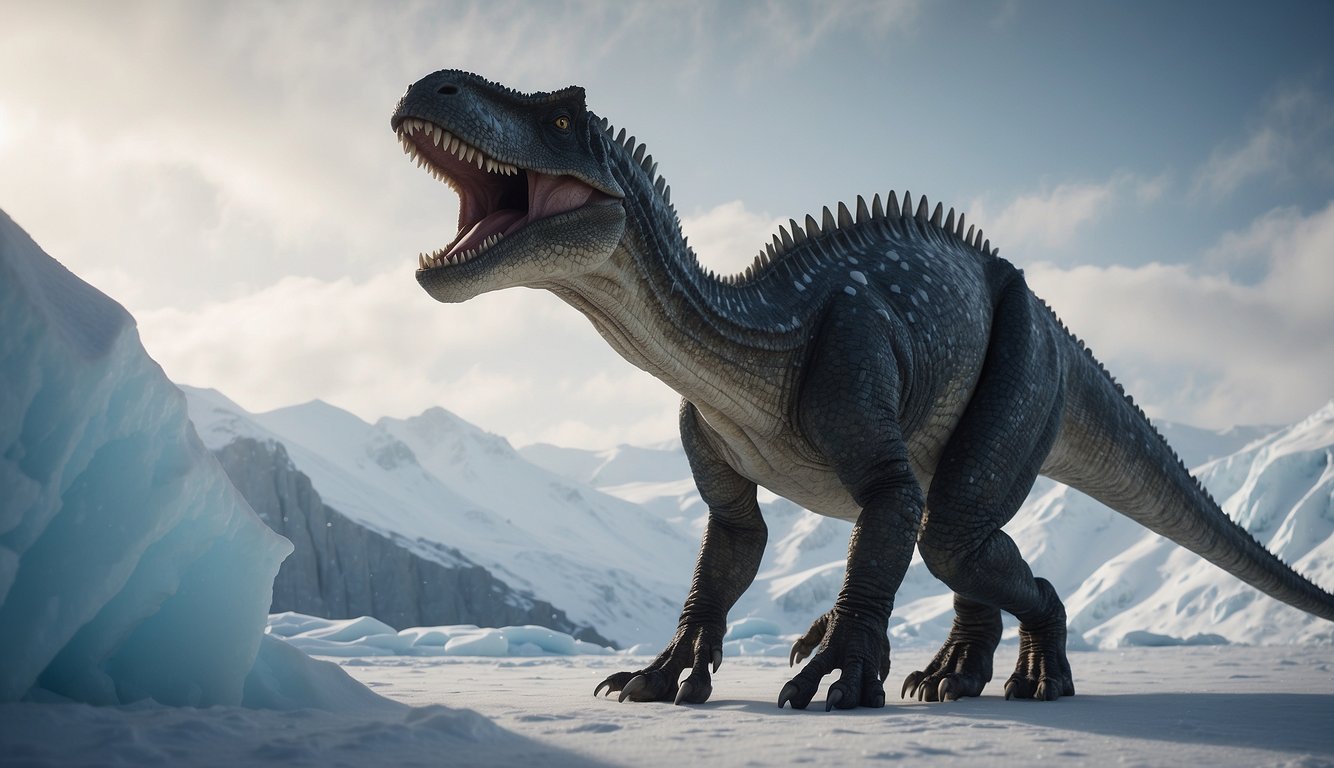
Nanuqsaurus hoglundi, commonly known as the Polar Dinosaur, lived in the Arctic region of North America during the Late Cretaceous period.
This dinosaur was discovered in the Prince Creek Formation, which is a geological formation located on the North Slope of Alaska.
Climate and Habitat
The Arctic environment that Nanuqsaurus lived in was vastly different from what we see today.
During the Late Cretaceous period, the Arctic was a warm and humid environment, known as the Greenhouse Arctic.
The average temperature was around 13°C (55°F), which is much warmer than the current average temperature of -30°C (-22°F).
Nanuqsaurus inhabited a landscape that was dominated by coniferous forests and had a diverse range of animals such as hadrosaurs, ceratopsians, and small mammals.
The Arctic environment was home to a variety of flora and fauna, which provided the necessary resources for Nanuqsaurus to survive.
Surviving the Seasons
Despite the warm climate, the Arctic region still experienced seasonal swings.
During the winter months, the Arctic was plunged into darkness, and temperatures dropped drastically. Nanuqsaurus had to adapt to these changes to survive.
During the winter months, the coniferous forests would have been covered in snow, making it difficult for Nanuqsaurus to find food.
To survive, it is believed that Nanuqsaurus may have migrated south to warmer regions or hibernated during the winter months.
During the summer months, the Arctic experienced almost 24 hours of daylight, providing Nanuqsaurus with ample opportunity to hunt and forage for food.
The warm and humid environment would have allowed for a diverse range of plant life, providing Nanuqsaurus with a variety of food sources.
Nanuqsaurus was a fascinating dinosaur that adapted to survive in the unique environment of the Arctic.
Despite the challenges that came with living in the Greenhouse Arctic, Nanuqsaurus was able to thrive and become a top predator in its ecosystem.
Frequently Asked Questions
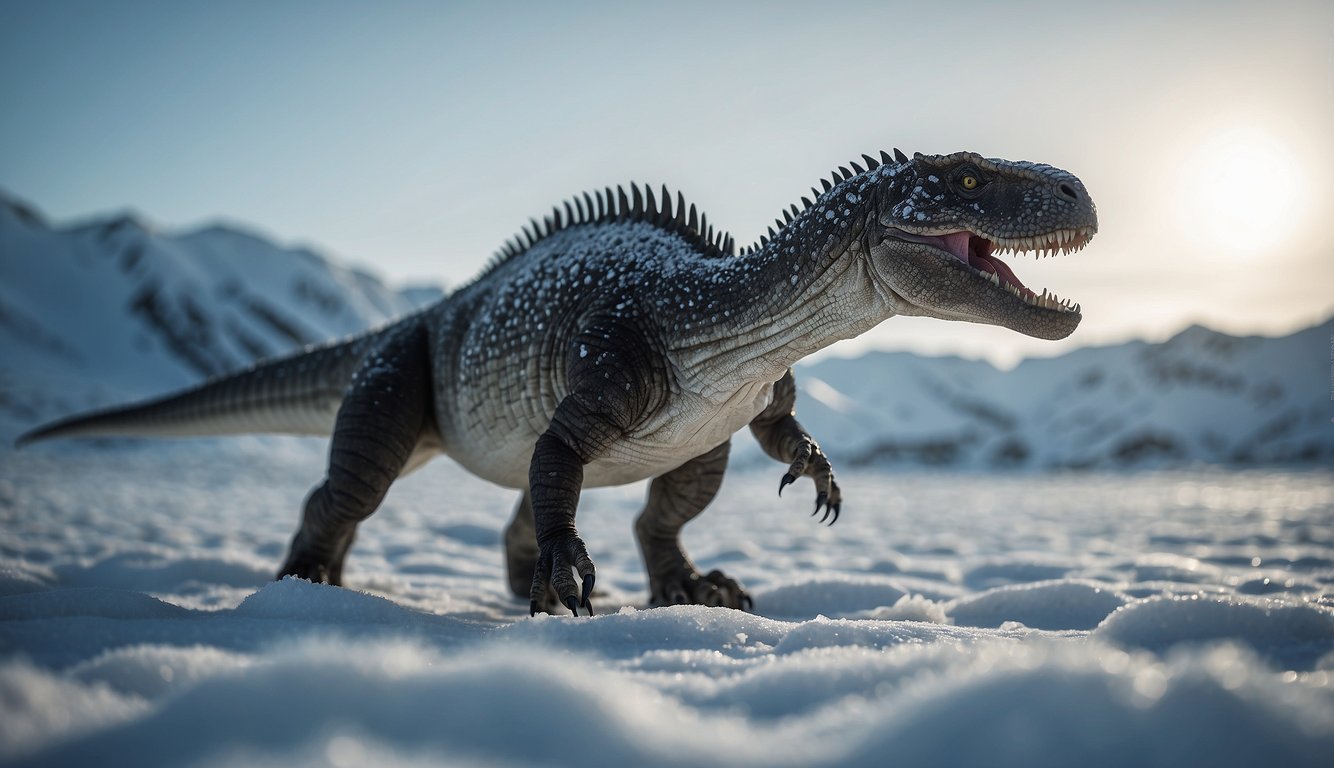
How large was the Nanuqsaurus compared to other dinosaurs?
Nanuqsaurus was a small-sized dinosaur that lived in the Arctic region. It was only about two-thirds the size of the famous Tyrannosaurus rex.
Based on the fossils found, it was estimated to be about 20 feet long, which is much smaller than its close relatives.
What did the Nanuqsaurus eat to survive in the Arctic conditions?
Nanuqsaurus was a carnivorous dinosaur, which means it primarily ate meat.
It is believed that the Nanuqsaurus fed on other smaller dinosaurs and animals that lived in the Arctic region.
The fossils found suggest that it had strong jaws and sharp teeth, which it used to tear through its prey.
When and where was the Nanuqsaurus first discovered?
The Nanuqsaurus was first discovered in 2006 in the Prince Creek Formation of the North Slope of Alaska, USA.
The discovery was made by Anthony Fiorillo of the Perot Museum of Nature and Science in Dallas, Texas.
The fossils found were of a partial skull, which was enough to classify it as a new species of dinosaur.
What adaptations did the Nanuqsaurus have for living in the polar environment?
The Arctic region where the Nanuqsaurus lived was cold and had long periods of darkness.
To survive in these conditions, the Nanuqsaurus had several adaptations.
For example, it had a large body mass that helped it retain heat, and it had a keen sense of smell and vision that helped it hunt in low light conditions.
Can you describe the hunting behavior of the Nanuqsaurus?
The Nanuqsaurus was a predator that hunted other animals to survive. It is believed that it used its sharp teeth and powerful jaws to kill its prey.
Based on the fossils found, it is also believed that it was a fast runner, which helped it chase down its prey.
Which dinosaur is considered the closest relative of the Nanuqsaurus?
The Nanuqsaurus belongs to the Tyrannosauridae family, which includes other famous dinosaurs like the T-Rex.
Based on the fossils found, it is believed that the closest relative of the Nanuqsaurus is the Tarbosaurus, which lived in what is now Mongolia during the late Cretaceous period.

